Differences in Student Characteristics in Face-to-Face and Online Cohorts in a Teacher Preparation Program in Education of the Deaf and Hard of Hearing
|
Deirdre M. Curle
Department of Educational and Counselling Psychology, and Special Education
University of British Columbia
Vancouver, B.C. V6T 1Z4
dcurle@interchange.ubc.ca
Janet R. Jamieson
Department of Educational and Counselling Psychology, and Special Education
University of British Columbia
Vancouver, B.C. V6T 1Z4
janet.jamieson@ubc.ca
Abstract
Over the past decade, teacher preparation programs in education of the deaf and hard of hearing have integrated online learning, but there have been few systematic attempts to determine to what extent, if any, this may be associated with a change in relevant student characteristics. The purpose of the present study was to compare student characteristics of the last four face-to-face and the first four hybrid (combined online and face-to-face) cohorts in a specialist-teacher preparation program that underwent a transition from face-to-face to hybrid formats. Relevant student characteristics, including gender, age, hearing status, teaching experience in general education, signing ability, motivation for entering the profession, and job obtained following graduation were examined for the two groups of students. Predominant findings revealed that the students in the hybrid option were slightly older, more likely to be parents, had more prior teaching experience in general education, were almost twice as likely to come from rural settings and one-third more likely to obtain a first job in a rural setting than students in the face-to-face format. In addition, the findings clarify the need to recruit students who are male, have fluent signing abilities, and/or are deaf or hard of hearing.
Keywords: online learning, teacher education, deaf and hard of hearing, rural
|
Introduction
A major challenge in public education is meeting the need for specialist educators, who have specialized professional preparation beyond initial teacher training. In fact, in the United States, Special Education classes have the highest number of teachers lacking qualifications or endorsements for the position of any teaching category (Boe, 2006; Payne, 2005). Similarly, in Canada, there is a notable shortage of teachers with Special Education qualifications, especially in rural areas and the north (Kitchenham & Chasteauneuf, 2010). In an attempt to resolve this dilemma, many teacher preparation programs are offering some certification programs online in an effort to recruit pre-service teachers from rural areas, and to create flexible continuing education opportunities for individuals who are already employed in education or other fields (Hughes, Hagie, & Smith, 2005; Shin & Lee, 2009).
In the last two decades, online enrollment in higher education in general has increased substantially. Over 5.6 million students in the United States were taking at least one online course in 2009, a total of 30% of all higher education students (Sloan Consortium, 2010). Within the field of teacher education, a web-based search yields hundreds of online course offerings in teacher preparation programs worldwide. It is likely that online teacher preparation programs – or at least partial courses or programs - will continue to be a viable option for many who are considering entering the profession.
The advantages to online versus face-to-face (FTF) courses are numerous. For one thing, participation in courses can occur without the barriers of geographical distance or time. A commonly cited barrier to pursuing higher education is lack or cost of childcare (Kimmel & McNeese, 2006). An advantage to asynchronous online learning is that assignments can be completed at a time and place that is convenient to the student; therefore, it is possible for parents to participate in online learning activities from their home, while caring for their own children (Kazmer & Haythornthwaite, 2001). Consistent with this, Luetke (2009) conducted a survey with 108 students and former students enrolled in online classes in Education of the Deaf and Hard of Hearing. She reported that the older students were more likely to have chosen online learning because of the freedom from time and place obligation associated with traditional campus-based learning. For many individuals with families or jobs in rural areas, online learning has provided opportunities for entry into a new career, as well as learning opportunities to enhance knowledge in their current fields (Canter, Voytecki, & Rodriguez, 2007). In addition, class and library materials are easily accessible via the Internet. Students can participate in group work and class discussions, similar to a traditional classroom (Mayadas, Bourne, & Bacsich, 2009). From the perspective of higher learning institutions, online learning may be cost effective, allowing access to a higher number of students, and reducing the need for classroom space (Appana, 2008).
Despite the marked increase in online course offerings and enrollment, however, some obstacles do exist in “cyberspace classes.” For example, Muilenberg and Berge (2005) examined student-identified barriers to online learning in postsecondary classes. Students reported the lack of social interaction as the primary disadvantage, followed by administrative/instructor issues, lack of time and support for studies, and occasional low learner motivation. Lower-rated obstacles included technical problems, Internet cost/access, and students’ lack of technical skills. In response to some of the barriers posed by online learning, several researchers have recommended a hybrid program, which combines online with some traditional FTF courses (Dell, Hobbs, & Miller, 2008; Hughes et al., 2005; Lin, 2008).
As has been previously noted, there is a shortage of specialist educators within many areas of Special Education (Boe, 2006; Kitchenham & Chasteauneuf, 2010; Payne, 2005). Consistent with this trend, there has been a documented shortage of qualified teachers of the deaf and hard of hearing throughout North America for over a decade (Johnson, 2004). The professional preparation of these teachers of children and youth with hearing losses involves specialized training beyond the initial coursework for teacher certification. According to certification standards established by the Canadian Association of Educators for the Deaf and Hard of Hearing (CAEDHH) and the Council on Education of the Deaf (CED) in the United States, teachers of the deaf and hard of hearing must have an extensive knowledge base and broad repertoire of skills. Included among these are the development of visual, spoken and written language; communication approaches (including sign and oral language); specially designed and/or adapted curriculum materials; and foundational knowledge about hearing loss. In addition, these specialist teachers should have the knowledge required for typical teacher training programs (Canadian Association of Educators of the Deaf and Hard of Hearing, 2009; Council on Education of the Deaf, 2006). Thus, there is substantial professional preparation involved in the specialty area of Education of the Deaf and Hard of Hearing.
The provision of online courses and/or programs in education of the deaf and hard of hearing offers opportunities to reach future specialty teachers who may live in geographically remote locations or who are already teaching or working full-time. Currently, six universities in the United States and two in Canada offer online programs to pre-service teachers of the deaf and hard of hearing (deafed.net, n.d.; Stryker, 2011). These programs are designed to be asynchronous, allowing students to participate in classes at times convenient to them, utilizing tools such as e-mail and discussion boards to communicate with professors and students. Some of these programs are “hybrids,” requiring students to come together for a 2 – 4 week traditional class once a year, whereas others are completely online, with no FTF interaction. Other preparation programs for teachers of the deaf offer synchronous distance learning opportunities (Millet & Mayer, 2010; Slike, Berman, Kline, Rebilas, & Bosch, 2008; Smith & Allman, 2010). In these options, distance learners participate with FTF students during scheduled class times, using audio and video technology for two-way multimedia content and sign language communication, when needed.
There is a small but growing body of research that suggests that the demographic and personal characteristics of postsecondary students who enroll in online learning may be somewhat different than students enrolled in traditional FTF programs. Dabbagh (2007) noted that online learners include a diverse population, from individuals who are older, employed, and place-bound, to an increasing number of younger, “tech-savvy” undergraduates. Consistent with this, previous research has obtained mixed findings when investigating the age of students in online courses. For example, Stewart, Bachman, and Johnson (2010) examined student characteristics in online and traditional degree programs, and reported inconsistencies in the literature reporting age of online students, with some studies finding a majority of older students enrolled in web-based programs, and others finding no significant age difference. Other researchers have found that successful online students are motivated, independent learners who are computer literate and have strong reading and writing skills (Kerr, Rynearson, & Kerr, 2006).
Little is known about the specific characteristics of students in online programs in Education of the Deaf and Hard of Hearing, or how they might differ from those of students in more traditional, FTF programs in this specialty area. However, some documented information is available concerning the characteristics of graduates from traditional FTF programs with respect to hearing status and gender. In terms of hearing status, hearing students often outnumber deaf and hard of hearing students in teacher preparation programs. Simms, Rusher, Andrews, & Coryell, (2008) surveyed 313 American programs in Education of the Deaf and Hard of Hearing, and reported that 22% of the specialist teachers in their survey classified themselves as deaf, with more deaf professionals reported to be employed by residential schools for the deaf than by other settings. In their discussion of the professional development of deaf teacher candidates, Martin and Lytle (2000) pointed out that teachers who are themselves deaf or hard of hearing provide a positive role model for children with hearing loss, and may be more adept than some hearing teachers may be at understanding students’ signed communication and conveying information to students. In spite of the value of preparing teachers of the deaf and hard of hearing who have hearing losses, there is a dearth of research on the effectiveness of online teaching and learning in their professional preparation. However, Slike and Berman (2008) reported that the use of a variety of presentation modes, including closed captioning and the use of videophones, improved online delivery for deaf and hard of hearing students.
In terms of teacher gender, the field of Education of the Deaf and Hard of Hearing has traditionally attracted a majority of female teachers, typical of K-12 general education (Moores, 2008; Simms et al., 2008). Consistent with this, Statistics Canada (2011) reported that only 29% of full-time teachers in Canadian elementary through secondary schools were male, a drop from 32% in 2002. Likewise, in the United States, 26% of jobs in education, training, and library occupations were filled by males (U.S. Bureau of Labor Statistics, 2011). By contrast, according to the most recent Annual Survey of Deaf and Hard of Hearing Children from the Gallaudet Research Institute (April 2011), 54% of American children and youth with hearing losses are male. Thus, regardless of format, a larger proportion of male graduates from programs in Education of the Deaf and Hard of Hearing would enable male students with hearing losses to have more same-gender role models as teachers.
Current dramatic changes in the field of Education of the Deaf and Hard of Hearing necessitate an investigation of specialist teacher candidates and of the extent to which new graduates are prepared for these new trends. For example, and as noted by Johnson (2004) and Mitchell and Karchmer (2006), most students with hearing loss will be educated in their local public schools, rather than in residential or special day schools for the deaf, as was traditionally the case for most of the 20 th century. Deaf and hard of hearing students in integrated classrooms are educated alongside their hearing peers, with the ongoing and individualized support of an itinerant teacher of the deaf and hard of hearing. These itinerant teachers typically provide consultative and collaborative support to both students in integrated settings and their classroom teachers; by contrast, classroom teachers in separate educational programs for the deaf usually teach only children or youth with hearing losses, and are specialists in the communication approach used within that program (e.g., American Sign Language or auditory-oral approach). Each educational placement type (i.e., integration vs. self-contained) requires an overlapping set of knowledge and skills about teaching deaf and hard of hearing students, and each also demands particular specializations needed by the respective student populations. In addition, it is important to understand students’ motivations for entering the specialized profession. Although there is no known published research on motivation for entering the field of Education of the Deaf and Hard of Hearing, Brookhart and Freeman (1992) reported that first-career teacher candidates often choose the field of general education because of altruistic, service-oriented goals. In contrast, late-entry teachers entered the field for other reasons, such as family, decreased opportunities in their original field, or dislike of current job, although most referred to intrinsic motivation as a secondary reason (Serow & Forrest, 1994). To what extent are students motivated to enroll in FTF or hybrid programs, and do these program formats adequately prepare teachers of the deaf and hard of hearing to work in integrated and/or self-contained educational settings?
The purpose of the present study was to examine differences in specialist-teacher candidate characteristics for a traditional FTF program versus an online hybrid program in Deaf Education. Specifically, the research questions were:
- In what ways are student characteristics in a hybrid face-to-face/online program in Education of the Deaf and Hard of Hearing different from or similar to those of students in a totally face-to-face program?
- In what ways do graduates from the hybrid program meet or fail to meet the changing student placement trends in the field of Education of the Deaf and Hard of Hearing?
Method
Program
The Program in Education of the Deaf and Hard of Hearing at The University of British Columbia (UBC) has been in existence since 1968. From its establishment until the mid-1990s, the program provided an on-campus, post-teaching certification diploma in Education of the Deaf and Hard of Hearing. In 1994, the diploma program was upgraded to an on-campus, post-teaching certification master’s program. Both the diploma and master’s programs equipped teachers with specialized preparation to work with students with hearing losses.
In 2005 the master’s program was altered from a fully traditional, face-to-face (FTF) format to a hybrid format, with students completing their studies in two consecutive summers on campus and in an asynchronous online offering throughout the intervening school year. By virtue of this format, the students formed a community of learners during their first summer together, completed two online courses per term from September to June, and then returned to campus for their remaining courses. The students spent the following fall term completing a full-time 10-week student teaching practicum.
The shift from a fully FTF to a hybrid on-campus/online format was adopted for two main reasons. First, there was a critical national shortage of qualified teachers of the deaf and hard of hearing across Canada, but, ironically, a simultaneous decline in enrolment in the UBC program. Feedback from a variety of teachers interested in applying to the program indicated that although they wished to enter the program, they were not willing to move from their home communities to an expensive urban center (unless they already lived there) for continued postsecondary education. A largely online program format, offered on a part-time basis through the school year, would allow these teachers both to remain in their home communities and continue with their current teaching positions if they so desired. Second, specialized teachers of the deaf and hard of hearing were particularly needed in rural and remote areas of B.C.; however, the on-campus format attracted more students from the urban center where UBC is located than from rural areas, where specialist teachers were more urgently needed. A large proportion of the program graduates remained in Vancouver, leaving the rural need for specialized teachers largely unmet. A hybrid on-campus/online format which would allow teachers to remain rooted in their home communities for most of the program was judged to be more responsive to the rural need than the traditional fully FTF format.
Subjects and Procedure
Relevant characteristics of students from the four classes preceding the shift to the hybrid format (i.e., students in the FTF classes) were compared with those of the students from the first four classes in the hybrid offering. The former group included students who entered the program in 1999, 2000, 2002, and 2003; the latter group included students who entered in 2005, 2006, 2007, and 2009. (There was no entering cohort in 2008.) Class sizes of the former group were 8, 4, 5, and 6 students, respectively; class sizes of the hybrid groups were 7, 5, 7, and 15 students, respectively. Because of the small individual class sizes, the classes within each group (i.e., FTF and hybrid) were collapsed, which allowed a comparison of 23 students in the FTF group and 34 in the hybrid group.
Data Collection and Data Analysis
Information on the following student characteristics was obtained through a retrospective examination of student files: gender, hearing status, age at program entry, and years of teaching experience prior to program entry. Signing ability (beginner, intermediate, advanced) at program exit was determined by either faculty judgment (for seven of the eight classes) or by a consensus of student and faculty judgment (for the most recent class). In all cases the judgment was made following observation of student teaching on a full-time, 10-week practicum. Student status as parents while in the program was recorded. Each student’s first job post-graduation was noted in terms of location (rural vs. urban) and type within the field of Education of the Deaf and Hard of Hearing (itinerant, resource room, separate setting – school for the deaf/signing, separate setting – school for the deaf/oral, regular education, or did not work). Within each group (FTF and hybrid), student characteristics were calculated by both number and proportion.
Finally, on the first day of the program, each student described his or her reason for entering the field, and this was recorded by the program coordinator and included in the present data collection according to recurrent themes. Themes were determined individually by each author; in the very few cases of disagreement, the student motivations for entering the program were discussed and themes were agreed upon by consensus.
Results
In the comparisons of the two groups, the FTF students are referred to as the “traditional” group and the students in the summers on-campus/academic year online cohorts are called the “hybrid” group
Gender
Gender remained virtually constant across both program types, with three males in the traditional group, and none in the hybrid group (Fig. 1).
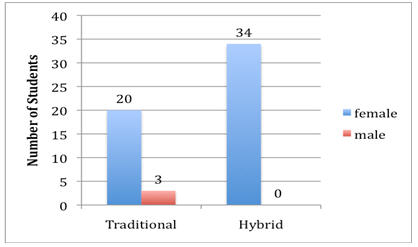
Figure 1. Student Gender
Student Hearing Status
In teacher preparation programs in Education of the Deaf and Hard of Hearing, it is common to have a number of deaf or hard of hearing students pursuing this career path (Johnson, 2004). In the present study, student hearing status remained virtually constant across both program types, with only two deaf or hard of hearing students in each group (Fig. 2).
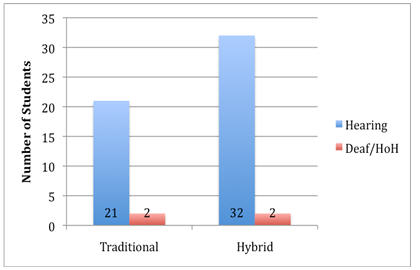
Figure 2. Student Hearing Status
Average Age at Program Entry
The students in the traditional group were slightly younger than the students in the hybrid group (Fig. 3). The mean age for the students in the traditional group was 30.1 years (range = 22 – 50 yrs), and the mean age for the students in the hybrid group was 36.8 years (range = 24 – 59 yrs) (Fig.3).
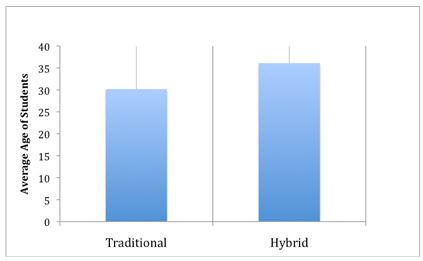
Figure 3. Average Age at Program Entry
Years Prior Teaching Experience
Of the two groups, the hybrid group averaged more prior teaching experience (Fig. 4). In the traditional group, 70% (n = 16) had no prior teaching experience, followed by 17% (n = 4) of the group with 1-5 years experience, 4% (n = 1) with 5-10 years, and 9% (n = 2) with more than 10 years. In contrast, less than half (44%, n = 14) the students in the hybrid group had no prior years teaching experience, followed by 35% (n = 12) with 1-5 years experience, and 21% (n = 7) with more than 10 years experience. In the hybrid group, there were no students in the range of 5-10 years experience.
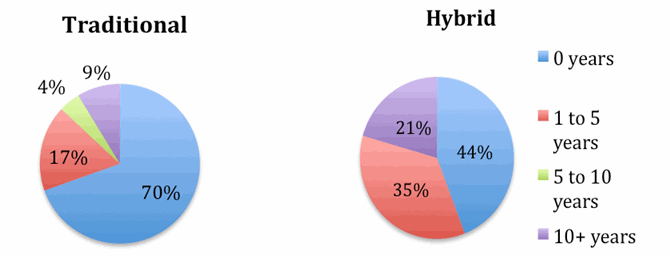
Figure 4. Prior Teaching Experience
Student Status as Parents
Of the students in the traditional group, only 9% (n = 2) reported having children, in contrast to 29% (n = 11) in the hybrid group (Fig. 5)
.

Figure 5. Student Status as Parents
Students’ Home Location
When the program changed to a hybrid model, the number and proportion of students from rural areas increased. Urban areas were home to 83% (n = 19) of traditional students, with 17% (n = 4) coming from rural areas. In contrast, 68% (n = 23) of the students in the hybrid group came from urban areas, with the remaining 32% (n = 11) from rural areas (Fig. 6).
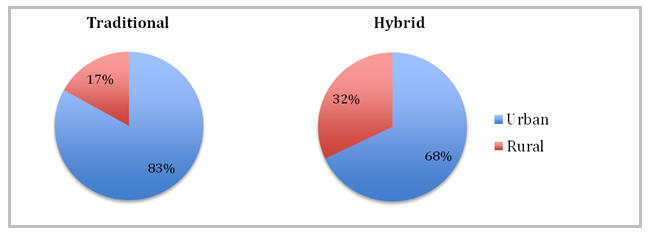
Figure 6. Student Home Location : Urban vs. Rural
First Job Post-Graduation
he students in the traditional group achieved 100% employment following graduation. Seventy percent (n = 16) of the students in this group obtained itinerant teacher of the deaf positions, with most of these (48% of the total traditional group, n = 11) finding work in urban school districts, and 22% (n = 5) filling rural itinerant teacher positions. Seventeen percent (n = 4) were employed by schools for the deaf (programs with a sign language communication approach), with the remaining 4% (n = 1) working in resource rooms for deaf and hard of hearing students, and 9% (n = 2) employed in general education settings (Fig. 7). The hybrid students also had a high employment rate, with 94% (n = 32) employment following graduation. Similar to the traditional group, 68% (n = 23) accepted positions as itinerant teachers of the deaf, but there was a slight shift: 43% (n = 15) of the hybrid students were hired by urban school districts, and 24% (n = 8) were employed by rural districts. Only 3% (n = 1) of students found employment with schools for the deaf that emphasized sign language, and another 3% (n = 1) found employment in a school for the deaf emphasizing oral language. Nine percent (n = 3) of hybrid students became resource room teachers for the deaf and hard of hearing, and 12% (n = 4) found employment in general education positions. Six percent (n = 2) of the hybrid graduates did not work in the year following graduation.
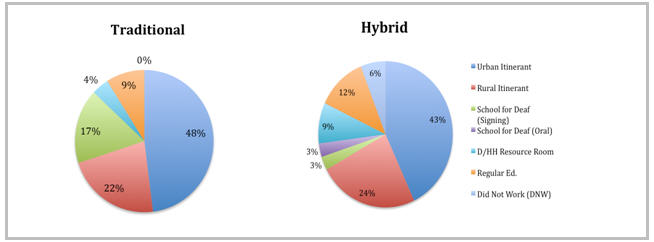
Figure 7. Type of First Teaching Position following Graduation
Predominant Reasons for Entering the Field
A change was noted in terms of students’ main reasons for entering the field of Education of the Deaf and Hard of Hearing between the two groups, with students in the traditional group citing more emotion-based or personal reasons, whereas students in the hybrid group indicated reasons that are more practical. In the traditional group, the three predominant reasons for entering the field were: an interest in Education of the Deaf and Hard of Hearing initiated during or as a result of taking a sign language class (26%, n = 6), personal experience with hearing loss (26%, n = 6), and a desire for a career change (22%, n = 5). In contrast, the three predominant reasons for entering the field among the hybrid group were desire for a career change (53%, n = 18), more job opportunities in Education of the Deaf and Hard of Hearing than in general education (15%, n = 5), and personal experience with hearing loss (15%, n = 5).
Sign Language Ability at Program Exit
Of the students in the traditional group, 48% (n = 11) exited the program with a beginner level of sign language skill, followed by 22% (n = 5) with intermediate level signing skills, and 30% (n = 7) at an advanced level (Fig. 8). By contrast, 76% (n = 26) of the students in the hybrid group exited the program at a beginner level, 15% (n = 5) at an intermediate level, and 9% (n = 3) at an advanced level.
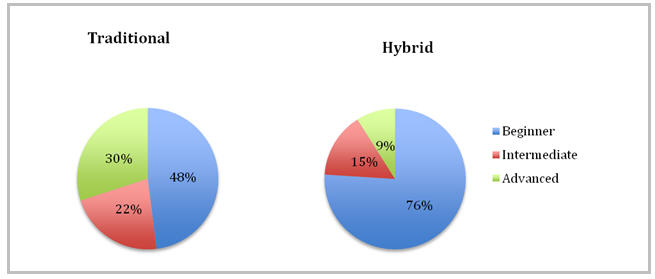
Figure 8. Students’ Signing Ability at Graduation
Discussion
The purpose of the present study was to examine the ways in which student characteristics in a hybrid combined FTF/online program in Education of the Deaf and Hard of Hearing differed from those of students in a more traditional, totally FTF program, and to consider the extent to which graduates from the hybrid program met or failed to meet the changing student placement trends in the field of Education of the Deaf and Hard of Hearing. This was accomplished by comparing a group of students enrolled in a traditional, FTF program from 1999 to 2003 to a group of students who participated in a combination, or “ hybrid” of online learning and campus-based learning, from 2005 to 2009. Students in the FTF group attended classes at The University of British Columbia campus for a period of two years to complete a post-teaching certification master’s degree program. In contrast, the students in the hybrid group completed the coursework (not including the practicum) by attending classes on campus for one month over each of two consecutive summers, with asynchronous online courses during the intervening academic year. A comparison of the two groups indicated some similar characteristics. Most notably, students in both groups were predominantly female, with only three males in the FTF group and none in the hybrid group. This is consistent with the findings of Moores (2008) and Simms et al. (2008) but is in contrast with the findings from the Gallaudet Research Institute (April 2011), which noted that 54% of American students with hearing losses are male. The findings of the present study, then, suggest that these male children and youth are not provided with a comparable proportion of male teachers who could serve as male role models. It is clear that a more balanced representation of male and female teachers is needed in education of the deaf and hard of hearing.
A second similarity between the FTF and hybrid groups was the proportion of students in each group who are themselves deaf and hard of hearing compared to the proportion who are hearing. In the UBC program, the number of individuals with hearing loss in the teacher preparation program was virtually constant across both groups, with two in the FTF group and two in the hybrid group. The UBC program attracted fewer students with hearing loss than the 22% reported by Simms et al. (2008), with only 9% in the FTF group and 6% in the hybrid group. Overall, then, the UBC program -- and others like it – would no doubt enrich the educational experience of children and youth by providing more same-gender and same-hearing status teachers, by recruiting more males and individuals with hearing loss.
In addition to the similarities already noted between the FTF group and the hybrid group in terms of student characteristics, several important differences were also apparent, including age and parental experience. Specifically, the students in the hybrid group were slightly older than those in the FTF group. There is no documented research on the age of students in online programs in Education of the Deaf and Hard of Hearing, so the findings concerning students’ ages from the present study are indicative of only the one program under investigation. In addition, along with their slightly increased age, the hybrid teachers were more likely to have children of their own than were the students in the traditional group. Thus, overall, it seems reasonable to assume that the online option of the hybrid program may have provided slightly more mature students with family obligations with a flexible route to pursue graduate studies, consistent with reports by Kimmel and McNeese (2006) and Kazmer and Haythornthwaite (2001 ) in the case of students in higher education in general. Luetke (2009) reported similar findings for older students in Education of the Deaf and Hard of Hearing in her research, who chose the online option because of the flexibility it provided.
Another noteworthy difference between students in the hybrid versus FTF groups was that the hybrid students entered the program with more years of classroom experience. A teacher of the deaf and hard of hearing with previous years of experience in the regular classroom is more likely to have a good understanding of instruction delivery and typical grade-level expectations, as well as personal knowledge of the needs and challenges of classroom teachers, in comparison with younger teachers with less or no prior teaching experience. The extensive classroom experience would be especially vital in supporting new itinerant teachers of the deaf and hard of hearing in their roles as collaborators and consultants, as they work with other teachers and administrators to accommodate their students’ hearing losses.
Another important difference between the students in the FTF and the hybrid groups was students’ communities of origin. Although the majority of students in both groups were from urban areas, the hybrid students lived in more geographically diverse areas and were more likely to obtain their first teaching positions after graduation in rural areas, than were the students in the FTF group. It is not surprising that the hybrid group included more students from rural areas in both number and proportion than did the FTF group: distance education is often an appealing option to those who live in rural areas, as it overcomes the barrier of lack of proximity to a university (Canter et al., 2007). Similarly, it is logical to assume that many, if not most, slightly older teachers from rural areas, who have strong personal and professional ties to their communities, will return to those locations following graduation. Consistent with this, other researchers have found that pre-service teachers who have ties to rural areas are more likely to seek positions in rural areas (Dell et al., 2008). Thus, hybrid online programs may be more likely to meet the needs of specialist teacher candidates residing in rural areas, as well as meet the needs of the field of Education of the Deaf and Hard of Hearing, which, like other areas in Special Education, has struggled to fill positions in rural areas (Canter et al.).
The students in the FTF and hybrid groups also differed in terms of their primary motivation to enter the field of Education of the Deaf and Hard of Hearing. The reason most often cited by the FTF group for entering the program was developing an interest in the field by taking a sign language class, followed by having a personal experience with someone with a hearing loss. Although some members of the hybrid group also mentioned personal experience with deafness, hybrid students were more likely overall to have entered the field for professional reasons, such as a career change or increased job opportunities. The more career-based motivations expressed by the slightly older hybrid group in the present study, as compared to the FTF group, are consistent with the findings of Serow and Forrest (1994), who noted the more practical reasons for becoming general education teachers, such as decreased opportunities in their original fields. It is not clear at this point how – or even if – these different motivations (i.e., more personal vs. more career-driven) will impact the field of Education of the Deaf and Hard of Hearing or ultimately affect the teaching practice of students in either the FTF or hybrid groups. It may be that a personal connection with hearing loss may facilitate or promote feelings of empathy or an intuitive understanding of the communication and social needs of children and youth who are deaf or hard of hearing.
One disadvantage in the hybrid group, in comparison to the FTF group, was a lack of strong sign language skills, with the exception of teacher candidates who were previously sign language interpreters. This matches the overall trend in Education of the Deaf and Hard of Hearing, which has experienced a decline in enrollment in residential schools for the deaf, and an increase in integrated placements in local schools (Johnson, 2004; Mitchell & Karchmer, 2006). However, even though the number of children who are deaf or hard of hearing who communicate orally is increasing -- given the widespread implementation of newborn hearing screening and earlier and more effective amplification early in life, many children with hearing loss continue to rely on sign language as a primary or supplementary means of communication. The shortage of teachers of the deaf and hard of hearing who are skilled signers is problematic. Thus, it would appear that the hybrid group is less well equipped than the FTF group for meeting the communication needs of students who sign.
The Limitations of the Study
There were a number of limitations to this study that hinder generalization of the findings to other specialist-teacher preparation programs. Only one program in one location was examined, and a small number of students was involved. Nevertheless, this preliminary study yielded informative findings for the particular context of teacher preparation programs in Education of the Deaf and Hard of Hearing that are presented in an online asynchronous format. The findings are consistent with previous research on online university programs, which shows that online learners are a diverse population, including older, employed, and place-bound students, as well as young, urban students (Dabbagh, 2007). The present findings also reveal that the UBC students under investigation are typical of teachers of the deaf and hard of hearing elsewhere, in that they are predominantly female and hearing. Some aspects of difference between the FTF and hybrid groups, such as increased geographic diversity among the hybrid students, may be attributed to the flexible, easily accessible format of online courses.
Suggestions for Future Research
The findings are suggestive of at least two other avenues of future research: (1) Are the patterns that were noted in the hybrid group – particularly those related to students’ maturity, professional experience, and geographical diversity -- characteristic of other programs for teachers of the deaf and hard of hearing that have a strong online component? and (2) What approaches could be designed and implemented to recruit more males and individuals with hearing loss to hybrid programs in Education of the Deaf and Hard of Hearing? A deeper understanding of these issues could help us better prepare future teachers of the deaf enrolled in online courses.
Conclusion
The present research was a preliminary study on the difference in demographic and personal characteristics between students in a traditional, face-to-face format and students in a hybrid, partially on-campus, and partially online format in a graduate program in Education of the Deaf and Hard of Hearing. Predominant findings revealed that the students in the hybrid option were slightly older, more likely to be parents, had more prior teaching experience in general education, were almost twice as likely to come from rural settings and one-third more likely to obtain a first job in a rural setting than students in the face-to-face format. However, the findings also indicated that the students in the hybrid group had less fluent signing skills than their peers in the traditional, face-to-face group. Overall, the research suggests that graduates of the hybrid group possess many characteristics and skills – such as maturity and extensive prior classroom experience – that would contribute strongly to the success of an itinerant teacher of the deaf and hard of hearing. The study results also clarify the need to recruit students who are male, have fluent signing abilities, and/or are deaf or hard of hearing, to provide a broad range of teachers who can communicate fluently with and serve as positive role models for a broad range of children and youth who are deaf or hard of hearing.
Acknowledgements
We would like to thank the graduate students who were members of the program in Education of the Deaf and Hard of Hearing at The University of British Columbia between 1999 and 2009, who taught us valuable lessons and shared insightful comments about teaching and learning in both face-to-face and online formats.
References
Appana, S. (2008). A review of benefits and limitations of online learning in the context of the student, the instructor, and the tenured faculty. International Journal on E-Learning, 7, 5-22.
Boe, E. E. (2006). Long-term trends in the national demand, supply, and shortage of Special Education teachers. Journal of Special Education, 40, 138-150.
Brookhart, S.M., & Freeman, D.J. (1992). Characteristics of entering teacher candidates. Review of Educational Research, 62, 37 – 60. doi: 10.3102/00346543062001037
Canadian Association of Educators of the Deaf and Hard of Hearing (2009). CAEDHH Specialist Certification Standards . Retrieved from http://www.caedhh.ca/MyFiles/Certification%20Standards%20May%202009.pdf
Canter, L. L. S., Voytecki, K. S., & Rodríguez, D. (2007). Increasing online interaction in rural Special Education teacher preparation programs. Rural Special Education Quarterly, 26, 23-27.
Council on Education of the Deaf (2006). CEC-CED Standards. Retrieved from http://deafed.net/activities/cec-ced1.htm
Dabbagh, N. (2007). The online learner: Characteristics and pedagogical implications. Contemporary Issues in Technology & Teacher Education, 7, 217-226.
deafed.net. (n.d.). Retrieved from http://www.deafed.net/PageText.asp?hdnPageId=120
Dell, C., Hobbs, S., & Miller, K. (2008). Effective online teacher preparation: Lessons learned. Journal of Online Learning and Teaching, 4, 602-610 . Retrieved from https://jolt.merlot.org/vol4no4/dell_1208.htm
Gallaudet Research Institute (April, 2011). Regional and national summary report of the data from the 2009 – 2010 annual survey of deaf and hard of hearing children and youth. Washington, DC: GRI, Gallaudet University. Retrieved fromhttp://research.gallaudet.edu/Demographics/2010_National_Summary.pdf
Hughes, M., Hagie, C., & Smith, S. (2005). The positive and challenging aspects of learning online and in traditional face-to-face classrooms: A student perspective. Journal of Special Education Technology, 20, 52-59.
Johnson, H. A. (2004). U.S. Deaf Education teacher preparation programs: A look at the present and a vision for the future. American Annals of the Deaf, 149, 75-91.
Kazmer, M.M., & Haythornthwaite, C. (2001). Juggling multiple social worlds: Distance students online and offline. American Behavioral Scientist, 45, 510-529. doi: 10.1177/00027640121957196
Kerr, M. S., Rynearson, K., & Kerr, M. C. (2006). Student characteristics for online learning success. The Internet and Higher Education, 9, 91-105.
Kimmel, S.B. & McNeese, M.N. (2006). Barriers to business education: Motivating adult learners. Journal of Behavioral and Applied Management, 7, 292-303. Retrieved from http://ibam.com/pubs/jbam/articles/vol7/no3/JBAM_7_3_4_Barriers_to_Business_Education.pdf
Kitchenham, A., & Chasteauneuf, C. (2010). Teacher supply and demand: Issues in northern Canada. Canadian Journal of Education, 33, 869-896.
Lin, Q. (2008). Student views of hybrid learning: A one-year exploratory study. Journal of Computing in Teacher Education, 25, 57-66.
Luetke, B. (2009). Evaluating Deaf Education web-based course work. American Annals of the Deaf, 154, 62-70. doi: 10.1353/aad.0.0076
Martin, D. S., & Lytle, R. R. (2000). Deaf teacher candidates in hearing classrooms: A unique teacher preparation program. American Annals of the Deaf, 145, 15-21.
Mayadas, A.F., Bourne, J., & Bacsich, P. (2009). Online education today. Science, 323, 85-89.
Millet, P., & Mayer, C. (2010). Integrating onsite and online learning in a teacher of the deaf and hard of hearing education program. Journal of Online Learning and Teaching, 6, 218-227. doi: https://jolt.merlot.org/vol6no1/millett_0310.htm
Mitchell, R.E., & Karchmer, M.A. (2006) Demographics of Deaf Education: More students in more places. American Annals of the Deaf, 151, 95-104.
Moores, D. F. (2008). Inclusion, itinerant teachers, and the pull-out model. American Annals of the Deaf, 153, 273-274.
Muilenburg, L. Y., & Berge, Z. L. (2005). Student barriers to online learning: A factor analytic study. Distance Education, 26, 29-48.
Payne, R. (2005). Special education teacher shortages: Barriers or lack of preparation? International Journal of Special Education, 20, 88-91.
Serow, R.C., & Forrest, K.D. (1994). Motives and circumstances: Occupational-change experiences of prospective late-entry teachers. Teaching & Teacher Education, 10, 555-563. doi:10.1016/0742-051X(94)90006-X
Shin, M., & Yoon-Joo Lee. (2009). Changing the landscape of teacher education via online teaching and learning. Techniques: Connecting Education & Careers, 83, 32-33.
Simms, L., Rusher, M., Andrews, J., & Coryell, J. (2008). Apartheid in Deaf Education: Examining workforce diversity. American Annals of the Deaf, 153, 384-395.
Slike, S. B., & Berman, P. D. (2008). Integrating multiple media sources to teach synchronous online courses to learners who are deaf or hard of hearing. Journal of Instruction Delivery Systems, 22, 10-13.
Slike, S. B., Berman, P. D., Kline, T., Rebilas, K., & Bosch, E . (2008). Providing online course opportunities for Deaf/HH and hearing learners. Journal of Instruction Delivery Systems, 21, 6-10.
Sloan Consortium (2010). NASULGC-Sloan National Commission on Online Learning, Benchmarking Study: Preliminary Findings. Retrieved from www.sloanconsortium.org/publications/survey/nasgulc-prelim
Smith, C. & Allman, T. (2010). Meeting the challenges of Deaf Education teacher preparation: Innovative practices in online learning. Journal of Online Learning and Teaching, 6, 523-532. Retrieved from https://jolt.merlot.org/vol6no2/smith_0610.pdf
Statistics Canada (2011).Education indicators in Canada: Report of the Pan-Canadian education indicators program. Publication No. 81-582-X. Retrieved from http://www.statcan.gc.ca/bsolc/olc-cel/olc-cel?catno=81-582-x&lang=eng
Stewart, C., Bachman, C., & Johnson, R. (2010). Students’ characteristics and motivation orientations for online and traditional degree programs. Journal of Online Learning and Teaching, 6, 367-379. doi: https://jolt.merlot.org/vol6no2/stewart_0610.pdf
Stryker, D. S. (2011). Baseline data on distance education offerings in Deaf Education teacher preparation programs in the United States. American Annals of the Deaf, 155, 550-561.
U.S. Bureau of Labor Statistics. (2011). Labor force statistics from the current population survey. Downloaded from http://www.bls.gov/cps/cpsaat11.pdf








